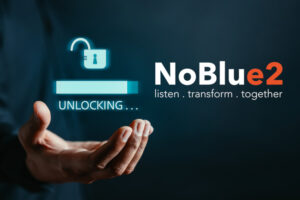Business seems effortless when you have excellent communication and collaboration. Teams work well together to complete projects on time, nothing goes over budget, staff are happy and productive – and your business thrives.
If this isn’t happening in your business, then maybe you could benefit from using a unified business tool, like an ERP system.
Here’s how unifying your tools by using an ERP can improve collaboration and communication within your company.
Integrates Your Business Processes
An ERP system provides a single solution that integrates various processes across your business. It provides management of your financials, accounting, CRM, marketing, HR and more. Plus, it has core functionality that is tailored for your business area, whether you need specialised features for warehousing and ecommerce functionality, project and client management or manufacturing and assembly.
With a unified system there’s no need to implement lots of standalone software systems. This saves money and time. Staff don’t have to access different systems for different tasks, nor do you have to pay for or maintain several software solutions.
Operates on a Single, Centralised Database
With just the one, unified system, all your company data is held on a single database. This centralised store holds all your financial information, sales data, customer records, marketing campaigns and staff data.
Your employees are always using live information, which is up to date and accurate. And when you have just one system that runs across the whole business, it’s harder for individual departments to operate in siloes.
This improves collaboration. For example, your sales team can track customer interactions, leads and opportunities. Any member of the team can quickly access the latest data on a customer to view its status, previous interactions and ongoing deals. This eliminates the need for constant back-and-forth communication or reliance on outdated spreadsheets and documents, enabling better collaboration and coordination among team members.
Real Time Visibility and Analytics
Through customisable dashboards and reports, data from different areas of your business is consolidated and presented in a unified manner, allowing users to monitor KPIs, track sales, manage stock levels and analyse financial metrics.
This holistic view of the business enables timely and informed decision-making. For example, a warehouse manager can access real-time data on stock levels, supplier deliveries and customer orders all in one place. From this, they can identify trends, anticipate customer demands and adjust stock levels accordingly.
Staff can also collaborate more effectively with other areas of the business, perhaps coordinating with the sales team to understand customer needs and then aligning stock levels and purchasing plans accordingly.
Effective Team Project Management
For professional services companies, ERP has tools that facilitate effective collaboration for those working on projects or in client teams. Users can assign tasks, set deadlines, track progress and share project-related information within the system. This streamlines project management, enhances team collaboration and improves visibility into project statuses.
For instance, if you are a consulting firm, you can use an ERP system to manage your client projects and track consultants’ billable hours. You can set up projects, define project scopes and allocate resources. With collaboration tools and a centralised view of projects, your consultants can easily share project-related information, updates and files within the system. This fosters efficient communication among team members, improves collaboration and ensures that all project stakeholders have access to the latest project information.
Customer Communications
Customer communications are significantly improved using an ERP system. With built-in email management, your users can send and receive emails directly within the ERP platform. They can track email interactions and store correspondence, automatically associating it with specific customer records.
This centralises customer communication history and makes it very easy for anyone in the business to review past conversations. It’s simple, therefore, for someone in customer service to pick up a conversation that may have been started by a sales manager. This gives your staff the ability to have informed and consistent interactions with your customers.
The complete 360-degree view of each customer extends beyond email. It also includes sales orders, support tickets and other relevant interactions. With a comprehensive customer profile at their fingertips, your employees can provide personalised and informed customer service.
With seamless communication like this, you avoid misunderstandings and delays. Your customers also benefit from not having to repeat everything to each new staff member they speak with, which avoids frustration.
Workflow Automation
With workflow automation capabilities, an ERP can streamline and standardise processes. Via automated notifications and triggers based on specific events or actions, actions take place automatically.
This helps facilitate cross-company collaboration. Take the example of a consultancy onboarding a new client. When the new client is signed, your ERP system can automatically initiate the client onboarding processes, assigning tasks to different teams and individuals. For example, directing the finance team might to add invoicing details to the system, the legal team to add the contracts, the project management team to initiate project scoping and resource allocation, and so on.
A Unified Tool for Effective Collaboration and Communication
ERP solutions work across the business, helping to boost communication and collaboration – and through this, they can ultimately enhance your profitability.
When you work from a single database, you eliminate manual rekeying of data, which promotes consistency and accuracy and provides everyone in the business with up-to-date information.
With a unified approach, collaboration within and across teams is improved, helping to facilitate cross-functional problem-solving and streamlined decision-making processes. Teams work better together, share information and progress towards common goals. Working siloes are eliminated, resulting in a culture of collaboration and knowledge-sharing.
With NetSuite ERP, you get this unified approach and much more. It has comprehensive financial and departmental functionality, with modules and extensions to suit all needs and is cloud-based for anywhere, anytime access.
Using NetSuite, you can draw on the collective expertise and diverse perspectives of your teams and benefit from its collaboration and communication advantages, leading to improved customer satisfaction and greater profits. For more information on NetSuite, contact us for a tailored quote or a demonstration.










